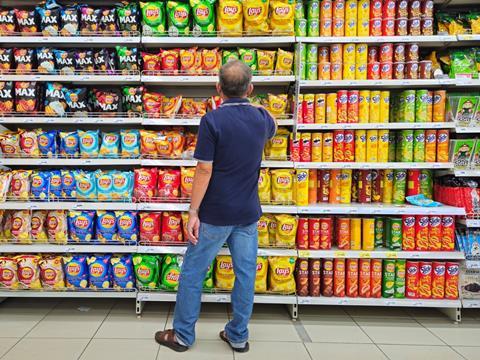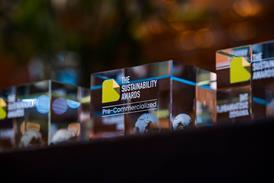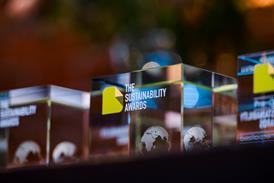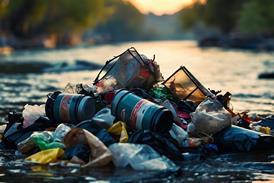
Our industry faces a dilemma: while packaging is still seen as a “silent seller”, new EU rules promote minimal, necessary packaging. How can businesses embrace this change and adapt to new conditions? Anna Perlina, sustainable packaging consultant at Integrity Solutions, offers a potential solution.
I sense that businesses may hesitate when advised to reduce their existing packaging.
This reluctance isn’t due to a lack of commitment to their environmental responsibilities; rather, it stems from the role that packaging plays today as a “silent seller.”
That’s why many companies might understandably be cautious about altering a packaging strategy that has already proven to be effective.
This strategy may include adding extra packaging layers, increasing the size of the packaging, using higher-grade materials that are typically virgin or over-specified, offering fancy pack construction and applying intricate finishing, or hiding plastic beneath a paper-based layer for better aesthetics.
Of course, there are valid business reasons for this: consumers appreciate the unboxing experience, while business owners want to provide that unique experience to their customers. They also want their products to stand out on the shelf and have more surface area for communication in order to sell their products.
In the ongoing dialogue surrounding sustainable packaging, the focus often shifts toward recyclability. While improving recyclability is indeed an important aspect, there’s another issue that deserves attention: the need to minimize packaging use, i.e., to use just enough packaging required to meet its basic functionalities.
Avoidance and reduction of excessive packaging are typically the first steps in the sustainable packaging journey, allowing for an immediate improvement in environmental impact. While we often discuss packaging design for recycling, the starting point should be designing for basic functionality, where recycling aspects and material choices are part of the overall criteria.
What does minimum packaging mean, and how can it be defined?
The upcoming PPWR (EU Packaging and Packaging Waste Regulation) sets a common framework and provides a methodology for packaging minimization assessment, where packaging must meet the following criteria:
1. Protect the product from the point of packaging or filling until the end use, preventing damage, loss, deterioration, or waste.
2. Be compatible with the packaging manufacturing and filling processes.
3. Ensure adequate and safe distribution, transport, handling, and warehousing of the packaged product.
4. Provide any necessary information to users and consumers.
5. Ensure user and consumer safety, as well as product safety and hygiene throughout distribution, end use, and disposal.
6. Comply with applicable legislation for packaging and packaged products.
7. Ensure recyclability, inclusion of recycled content, or reuse.
At the same time, the PPWR states that “while marketing and consumer acceptance remain relevant for packaging design, they should not be part of the performance criteria justifying additional packaging weight and volume on their own.”
This shift certainly represents a business challenge.
Indeed, for decades, packaging has been the face and story of the brand, creating first impressions and influencing purchasing decisions, engaging consumers through its look and feel, convenience, and ways of interaction, and contributing to our loyalty to repeat purchases.
Now, with this shift, how can companies attract consumers with a minimalist look and feel or even no packaging?
How can they differentiate their products on the shelf, either offline or online?
What if consumers don’t appreciate the change and disengage because they have lost the packaging interaction they are used to, or have to compromise on convenience and the appealing, premium look and feel? They might even perceive a loss of quality.
What if consumers don’t buy the product?
These are all valid business risks. While there is certainly a trend toward eco-consciousness among consumers, not all practice it on a daily basis, and not all are ready to make compromises, especially regarding convenience.
So, what could companies do? In my opinion, they could approach this as a business opportunity. Assuming that the product wrapped in the packaging is already good by itself, companies need to seek alternative ways to connect with their consumers and provide pleasant and memorable experiences through a different philosophy of minimalism, efficiency, responsible lifestyle choices, and individual impact.
What does this mean in practice? It means building on your actual efforts to reduce packaging and then telling your true and engaging story to onboard your consumers. Make them feel part of the narrative of reducing unnecessary waste and position minimalist packaging as the new normal or even the new premium.
What if sustainable packaging becomes part of your responsible brand concept?
If you liked this story, you might also enjoy:
The ultimate guide to the Packaging and Packaging Waste Regulation in 2024
How are the top brands progressing on packaging sustainability?
Sustainable Innovation Report 2024: Current trends and future priorities
Everything you need to know about global plastic sustainability regulation





















No comments yet